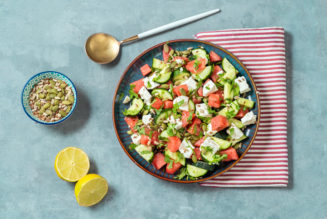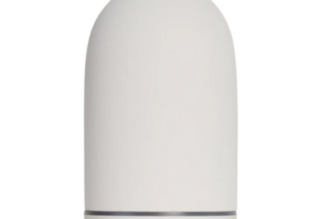
Full Transcript:
Released 5/2/2023
PODCAST OPEN:
You’re listening to the Live Yes! With Arthritis podcast, created by the Arthritis Foundation to help people with arthritis — and the people who love them — live their best lives. If you’re dealing with chronic pain, this podcast is for you. You may have arthritis, but it doesn’t have you. Here, learn how you can take control of arthritis with tips and ideas from our hosts and guest experts.
MUSIC BRIDGE
Bailey Cook:
Hello, and welcome to the Live Yes! With Arthritis podcast. My name is Bailey Cook. You may have also heard me on the “Words of Wisdom” episode as Bailey Bowman, and I will be your guest host today. I’m the manager of digital content planning here at the Arthritis Foundation. And I’m also a patient. I was diagnosed with juvenile arthritis when I was 8 years old. So, this podcast hits close to home for me, as I know it does for most of you listening.
Today, we’re going to be talking about a topic that a lot of people have strong feelings about: what to eat and what to avoid for arthritis, and the role that diet plays in managing your disease. Joining me today is Dr. Neha Shah. Dr. Shah is a clinical assistant professor in the Division of Immunology and Rheumatology at Stanford University, where she also serves as the program director for the adult rheumatology fellowship.
Dr. Shah has worked with hundreds of patients to develop personalized and comprehensive treatment plans that integrate diet, exercise, sleep and stress management, and other mind-body techniques, with modern medicine. Dr. Shah, welcome to the podcast.
Neha Shah, MD:
Thank you so much for having me, Bailey.
Bailey Cook:
Your approach to medicine, integrating lifestyle with modern medicine, is really interesting. How did you get into that?
Neha Shah, MD:
I grew up in an Indian household where, before my parents called the doctors to get a prescription for antibiotics or anything like that, we reached for home remedies typically in the kitchen drawer. That was the go-to for first line of treatment for anything. And there was all this emphasis on sleeping enough and doing exercise, getting fresh air. My grandmother knew about the special benefits of a little bit of sunshine every day and would spend some time with bright light on her every single day.
When I went through medical school and traditional medicine training and went into practice, I felt like there was something missing. I was prescribing medications, which certainly are very much needed in many of the conditions, especially those seen in rheumatology, medications that have been tried and proven in clinical trials.
But with that other emphasis on lifestyle, I felt like I needed additional training to be able to guide my patients in how they could better optimize their health. So, I started the journey of being a lifelong learner and furthered my knowledge through the integrative medicine fellowship at the University of Arizona. And I’m still learning every day.
Bailey Cook:
I had no idea that there were so many different routes that you could take with medicine.
Neha Shah, MD:
All of these additional trainings, they focus on lifestyle. They intersect and intertwine considerably. They just happen to be different pathways to better health.
Bailey Cook:
So, let’s talk about diet and nutrition. What does science tell us about whether diet and nutrition are important for managing arthritis symptoms?
Neha Shah, MD:
It is so important to listen to the patient. The science will inform us, but the patients inform us most. I will say that we need more money and more research put into dietary studies. And the latest American College of Rheumatology guidelines for the non-pharmacologic management of rheumatoid arthritis specifically recognizes that diet does play a role in arthritis, both pain, inflammation and quality of life when we’re talking about things like fatigue.
Bailey Cook:
How does it vary for people with osteoarthritis versus inflammatory forms like rheumatoid, psoriatic, ankylosing spondylitis?
Neha Shah, MD:
In osteoarthritis, there may not be as much of a direct correlation with a specific food, at least that has also been my experience with my patients in my clinic. We do have more research looking at diet in our inflammatory arthritis, like rheumatoid arthritis, lupus, psoriatic arthritis, ankylosing spondylitis.
There has been a growing interest in looking at what diet can do in osteoarthritis. I have colleagues looking at the pathophysiology of osteoarthritis. And they have found a role for mast cells. These are important cells that regulate inflammation, often through histamine. And we know that there’s quite a few foods that contain mast cell stabilizing phytonutrients like quercetin.
So, our understanding of the mechanisms and pathophysiology of osteoarthritis, I think, will help us ascertain how diet specifically can help osteoarthritis patients.
Bailey Cook:
I know nothing about diet, like I had Oreos for dinner one night. So (laughs), is it just tracking everything you eat and seeing how you feel? Or how do you normally get your patients started with that?
Neha Shah, MD:
Everything is very much individualized. I’ll have them keep a food journal. Someone can do this on paper and pencil. There are also different apps that help you do this; one is called mySymptoms. The next step that I often take with my patients who have inflammatory arthritis is considering an elimination diet. I have found elimination diets to be very helpful and low risk. There’s always the caveat of patients who might have eating disorders or things where I want to be very mindful about suggesting elimination diets. But for the vast majority of patients, a four- to six-week period of eliminating specific foods, after they’ve done a food journal, or even if they haven’t, sometimes we can generalize based on other patients’ experiences.
For someone with osteoarthritis, particularly if they happen to be overweight, then the approach might be a little bit different, where we may be working on ways to lose weight. I like to think of it more as a lifestyle change as opposed to a diet. So, identifying initially food triggers so that those can be eliminated.
But then, what can you eat? It’s something that brings people together, brings families together. It’s enjoyable. It’s fun to cook. I like to introduce my patients to this concept of introducing things to their diet that they may not have had a whole lot of before. Fruits and vegetables are at the core of that, and whole grains.
Bailey Cook:
I love that. How does what you eat affect inflammation?
Neha Shah, MD:
The first place where food hits is your intestinal tract. Diet has a huge impact on what our microbiome looks like, in terms of the types of bacteria that are living there, the variety of bacteria that are living there and the actual number of bacteria that are living there. As an example, a diet that is higher in fiber helps to stimulate the production and colonization of bacteria that are more fiber-fermenting bacteria. When these bacteria ferment the fiber that is in our diet, it produces things like short-chain fatty acids, like butyrate, that help prevent inflammation.
There are other ways, like direct metabolic pathways, that are affected by our diet. As an example, omega-6 fatty acids; these are high in things like red meat. In refined oils like corn oil and soybean oil. Those omega-6 fatty acids are metabolized into arachidonic acid. Arachidonic acid is essentially the precursor to quite a few other inflammatory chemicals in the body.
Omega-3 fatty acids, on the other hand, can decrease the production of those inflammatory pathways, and it goes through a different metabolic pathway that can decrease inflammation in the body. Glucose, specifically, one of the basic sugars that we can get in our body, and refined sugars, can stimulate certain T cells in the body that promote inflammation. So, diet, through many, many different pathways, can have an impact on inflammation.
PROMO:
This year, the Arthritis Foundation recognizes 75 years of progress for the arthritis community. Over the years, we’ve led the way in major achievements, from training rheumatologists, advancing joint replacements and introducing biologics and other breakthrough treatments — to providing life-changing educational programs and resources, like this podcast — to successfully advocating for better health care policies and laws. All to improve quality of life for the nation’s nearly 60 million adults and 300,000 children living with arthritis. Thank you for your support during 75 years of progress.
Bailey Cook:
I feel like everyone that has arthritis always hears anti-inflammatory diet. What does that mean?
Neha Shah, MD:
I will say there are many different versions of the anti-inflammatory diet out there. You might hear about the Mediterranean diet, the DASH diet. Most of the websites or things that patients might be going to that are talking about the anti-inflammatory diet, it is some tweaked version of the Mediterranean diet, oftentimes with additional things eliminated. The paleo diet oftentimes eliminates grains.
There may be other anti-inflammatory diets that are eliminating other food triggers, like nightshades or gluten or dairy. I think the broader way to think about an anti-inflammatory diet is basically a diet that is very rich in fruits, vegetables, whole grains, legumes, healthy fats like nuts and nut butters, and avocado and seeds like flaxseed and chia seeds. And low in sodium, refined sugars, animal fats and proteins and processed foods.
If you pick up something at the grocery store and there’s things that you can’t pronounce (laughs) on the ingredients list, it is likely a highly processed food and should be put back on the shelves. So, you know, just thinking about food, eating things as close to how Mother Nature intended them to be. Just a general way of thinking about the anti-inflammatory diet is just high fiber, low in processed foods, low in sugar and salt.
Bailey Cook:
I need to be better personally about looking at ingredients and seeing what’s in it. I love that you put it that way. That’s absolutely perfect for me personally, to be able to gauge what I should and shouldn’t be eating.
Neha Shah, MD:
Right, right. Things that are fewer ingredients, less processed things and, again, things that you can pronounce, are going to be better for you.
Bailey Cook:
What can you tell us about the ITIS diet?
Neha Shah, MD:
ITIS is a tweaked Mediterranean diet. And that, of course, the Mediterranean diet, high in fruits and vegetables, whole grains, beans and lentils, olive oil, limited dairy, some oily fish, that’s like the general Mediterranean diet. They tweaked this diet and added a homemade green drink that had a lot of green vegetables and fruits every morning. So, basically a blended green smoothie.
They included fruits that are high in certain anti-inflammatory enzymes, specifically pineapple, which is high in bromelain, and papaya, which is high in papain. Included cold water oily fish, like sardines, salmon, tuna, at least twice a week in that ITIS diet. And included healthy fats, like avocados, nuts, sesame seeds, sesame butter. The chia seeds and the flaxseeds, those are high in omega-3 fatty acids.
They had patients substitute coffee with green tea, and they also included some turmeric, one of my favorite spices. One of the main active constituents of turmeric, which is anti-inflammatory, it’s called curcumin. And they also included ginger.
They’ve done a few variations of the ITIS diet in rheumatoid arthritis patients. The first study was looking at actual rheumatoid arthritis activity from the standpoint of painful and swollen and tender joints, inflammatory markers and, of course, the patient’s responses. They found that, within two weeks, several patients had a significant improvement in their tender and swollen joint count. A follow-up study was looking at fatigue, and what they found in the follow-up study was that they could also impact fatigue. Nine of 20 patients, after two weeks of the ITIS diet, noted an improvement in their fatigue.
Bailey Cook:
No matter where you go, who you talk to, fatigue is always, in my opinion, the number one thing that anyone with arthritis complains about.
Neha Shah, MD:
Yeah. And, you know, one of the things I want to mention about diet is that so many of our rheumatologic diseases and autoimmune arthritis have a high association with other comorbid conditions, either due to the chronic inflammation itself, due to the disease, or some of the medications that we end up having to use, namely things like prednisone or steroids. Those comorbid conditions include things like diabetes, obesity, early cardiovascular disease.
Psoriasis and psoriatic arthritis is associated with metabolic syndrome. So, that also is an increased risk for long-term cardiovascular disease and diabetes. Addressing a patient’s inflammation with lifestyle and dietary change can also have an impact. We actually have many more studies of diet in things like heart disease, high blood pressure and diabetes than we have in arthritis. I think that’s an important point to make for patients who have arthritis is that, oftentimes, they don’t only have arthritis; they may either actually have this comorbid condition or are at increased risk for developing those comorbid conditions.
Bailey Cook:
Yeah, I think that a lot of times you hear that. What do you do, though? You have to take your arthritis medication, you know. So, this is really important, to fight it in a different way, which I think is really great. What advice can you give to help someone who, with arthritis, who’s overweight, versus maybe someone that’s just trying to control the inflammation?
Neha Shah, MD:
Obesity, it has a negative impact both on osteoarthritis, degenerative arthritis, as well as autoimmune inflammatory arthritis. From the standpoint of mechanics, body mechanics — hips, knees, feet — these, obviously, with increased body weight, see more impact on the joints from a mechanical standpoint. And you can see sort of faster cartilage degradation in patients who are overweight, particularly in the hips and the knees.
So, losing weight can have a significant impact when patients are actually walking in, and engaging in, weight-bearing activities. Not only can you see a slowing in the progression of the arthritis in the cartilage degradation, but an improvement in symptoms with weight loss.
In patients with inflammatory arthritis, even in those who are not excessively overweight, or those who may not have lower extremity symptoms in their hips and knees — they might have arthritis in their hands and wrists, for example, their shoulders. So, even in the joints that aren’t as impacted in terms of mechanical load, we do know that increased adiposity, these are the fat cells of the body, this can lead to an increase in different inflammatory chemicals in the body that promote more inflammation.
We have studies specifically in rheumatoid arthritis that show that obesity is a risk factor for not just increased disease activity in those patients who currently have rheumatoid arthritis, but it is also a risk factor for the development of RA in patients who don’t currently have rheumatoid arthritis.
The diet that helps with inflammation, the Mediterranean-like diet or anti-inflammatory diet, the ITIS diet, whichever version of these that you choose to follow, I want to recognize that there are hundreds and thousands of different cultural cuisines around the world. And though the Mediterranean diet is one of them, there is Indian food and Korean food and Japanese food and Latin American, you know, very specific foods, different ones in Brazil, Costa Rica and Mexico, and so forth.
Everyone thinks they need so much more protein than they may actually need. And so, looking at a plate, about half of that plate should be vegetables. Maybe some of it, a little bit, of fruits in there, but largely vegetables. A quarter of that plate, whole grains of some kind. And then a quarter of that plate, a protein, preferably something like chickpeas or lentils, some beans.
And we often forget we can actually get proteins from vegetables as well. So, tofu and soybeans, other forms of beans. There’s a lot of plant-based proteins that we forget about that are not only giving us the protein, but they’re also giving us fiber. The other benefit of increasing the fiber in your diet, having that half of the plate being vegetables, is for those patients who are trying to lose weight, fiber is very satiating; it fills us up.
Of course, all the other lifestyle things play a role here: getting adequate exercise, getting enough sleep. Diet and sleep often go hand in hand in helping to maintain weight.
PROMO:
Whenever you need help, the Arthritis Foundation’s Helpline is here for you. Whether it’s about insurance coverage, a provider you need help from or something else, get in touch with us by phone toll-free at 800-283-7800. Or send us a message at https://www.arthritis.org/helpline.
Bailey Cook:
You also mentioned you love to eat and cook plant-based dishes. And we just talked about how that’s obviously very good for you. Do you personally eat meat? Or do you stay focused on those plant-based dishes?
Neha Shah, MD:
I personally do not eat meat. I’m a lifelong vegetarian. And for the last three years, I am fully plant-based, short of honey; I do a little bit of honey in my diet. So, I want to be full disclosure here. (laughter)
The more all of us can incorporate more plant-based foods in our diet and steer away from animal-based proteins and dairy, from a health standpoint, I think it is so important. Even just shifting the diet to be more plant-based, whole food plant-based, is beneficial beyond just arthritis. We’re talking about cancer risk and cardiovascular risk. I’ve embraced a fully plant-based diet, even minus dairy, for the last three years. And I have to say: It’s delicious. A plant-based diet does not lack for flavor, does not lack for creativity. There’s a lot you can do in the kitchen.
Bailey Cook:
Personally, I love to eat meat. So, for somebody like me, what advice would you give to somebody that is maybe wanting to dabble in going a little bit more plant-based, and how would you get started and what advice what you give?
Neha Shah, MD:
I’m a big believer in baby steps. Starting with meatless Monday, for example. For some people, they’re used to having some animal-based protein at every meal, and maybe limiting it to one of the meals in your day instead of all three. There are baby steps that people can take — introducing more nuts and seeds to your diet.
I’ll have walnuts, almonds and pistachios, for example. Before, my husband would come home from work starving, and if I didn’t have dinner ready, he would pull out chips and salsa. Now he reaches for a handful of nuts.
Bailey Cook:
I think that’s my biggest challenge, and I’m sure a lot of people can relate, is just the convenience of fast food, processed food, all of those different things. And so, I love that you just keep on the counter, so when you’re absolutely starving, you can have a little snack and then have the time to make a better-for-you meal. (laughs)
Neha Shah, MD:
I think for me, out of sight is out of mind sort of thing. Or out of sight is out of mouth. I have a sweet tooth. I actually love dessert. But I know refined sugar is not good for me. I know if I have sweet treats in the house, my inclination would be to reach for them. So, I try not to have them in the house. And so that then, if I go out, it’s a special treat to have at that time, right? That’s another little trick.
Dark chocolate is another one of my tricks where, you know, instead of cake or cookies or pastries, which are high in refined sugar, high in processed flour, high in fat, having a little piece of dark chocolate that is 70% or higher, there are a lot of antioxidants and phytonutrients in chocolate that are good for us and can get that sugar craving out of your system. So, there are a lot of little tricks.
PROMO:
Get tips to help you take control of arthritis and put your mind at ease with the Arthritis Foundation’s free e-books. They’re packed with trusted information from the experts on all kinds of topics. See the full menu at https://www.arthritis.org/liveyes/expert-advice.
Bailey Cook:
For our podcasts, we always do a listener segment. For this episode, we asked the question on our social channel: What is your guilty pleasure food, something you know will aggravate your arthritis, but you just really like it? And it’s hilarious because you’ve actually touched on pretty much all of them.
Most of our listeners said pizza, carbs, gluten, things like that. Sugars, the pastries, the ice cream and candy. And I saw a lot of people had put tomatoes. What is the connection there?
Neha Shah, MD:
Yeah, so the nightshades. This is a big area of debate. First and foremost, there’s not a single study I have found yet actually studying nightshades in any kind of arthritis, whether we’re talking about RA, lupus or otherwise. Just because there’s not a study out there doesn’t mean it’s not happening for some patients. If a patient has made that connection, I have to trust that that is a connection that is real for them.
Bailey Cook:
Right.
Neha Shah, MD:
The theory is that these nightshade vegetables — tomatoes and, in some patients, bell peppers, potatoes and eggplant — they’re high in a plant alkaloid called solanine. And I guess the theory is that the solanine can irritate the intestinal lining and increase inflammation through that mechanism. Has that been proven in a study mechanistically? No, but that is, again, a theory.
I typically will ask patients to keep a food journal to see if they’ve noticed a connection. Solanine, interestingly, for tomatoes, for example, are highest in the skin and in the seeds. And the same thing goes for eggplants: It’s highest in the skin and the seeds. So, I have had occasional patients tell me that they can’t eat a whole raw tomato, but they can tolerate tomato paste. And tomatoes, on the other side, have a lot of benefits, like tomatoes are super high in lycopene, which, you know, particularly in men’s health, it’s important for preventing or reducing the risk of prostate cancer.
There was another interesting study I saw of tomatoes and gout. And it was found that those who had higher amounts of tomato in their diet have lower levels of uric acid and a decreased number of gout flares. So, there certainly are benefits to tomatoes for some patients. For everything that you’re craving out there that you know triggers your arthritis, there’s probably a healthy alternative.
One of the recipes I like to give my patients in my group visits is: I get that big bag of frozen dark cherries from Costco, and I just cook them down on my stove. I just let them simmer for about 20 to 30 minutes and add just a touch of almond extract or vanilla extract if you like, maybe a little bit of lemon zest or orange zest. And it makes a wonderful dessert in and of itself. You can throw it into oatmeal for a wonderful breakfast.
I think it’s important for people to not feel deprived. I think that leads to binging, and it can lead to unhealthy relationships with food. But at the same time, you can really have a delicious and robust and nourishing plant-based diet and lifestyle that can be both healthy and delicious.
Bailey Cook:
And it sounds like really it’s just figuring out what works for you.
Neha Shah, MD:
Yeah.
Bailey Cook:
We like to always wrap up our episode with our top three takeaways from this discussion. So, what are your top three takeaways?
Neha Shah, MD:
OK, so I have to quote one of my favorite authors here, Michael Pollan. He’s written some great books about food. “Omnivore’s Dilemma” is one of them. This is his quote: “Eat less, mostly plants.” I think that’s a great take-home.
Bailey Cook:
Yeah.
Neha Shah, MD:
Then the second take-home is just add more anti-inflammatory foods to your diet. Simple things like substituting diet soda with some green tea, adding more spices to your diet. And, of course, things like turmeric, ginger, cinnamon, black pepper, and adding more fruits and vegetables. And then the last take-home, particularly for those patients who have inflammatory arthritis, is to keep a food journal, and then consider doing an elimination diet.
Bailey Cook:
We have had many, many take-homes from this episode. I am not well versed in all things diet, nutrition and all of that. So, this has been really important for me to better understand how I can help myself and I know it’s going to help our listeners as well.
For our listeners who are interested in potentially learning more, we have already released some really great episodes on diet and nutrition, such as “Mindful Eating With Arthritis,” “Understanding Paleo, Keto and Intermittent Fasting,” “Food as Medicine,” “Anti-inflammatory Diet: Myths and Facts,” and “Microbiome Gut Health and Arthritis.” And we’ve also done a few webinars on it as well, such as “Taming Inflammation With Culinary Medicine,” “Gut Instinct,” “Chinese Nutritional Therapy for Arthritis,” “All About Fats,” “All About Carbs,” and “Arthritis and Plant-based Diets for Arthritis.” So, we have some really wonderful resources on arthritis.org. And we will also link them in our show notes. Dr. Shah, thank you so much for joining us.
Neha Shah, MD:
Thank you, Bailey. And thank you to the Arthritis Foundation for all the fantastic work you all are doing.
Bailey Cook:
Thanks so much. Bye-bye.
Neha Shah, MD:
Bye.
PODCAST CLOSE:
The Live Yes! With Arthritis podcast is independently produced by the Arthritis Foundation. This podcast aims to help people living with arthritis and chronic pain live their best life. People like you. For a transcript and show notes, go to https://www.arthritis.org/liveyes/podcast. Subscribe and rate us wherever you get your podcasts. And stay in touch!









